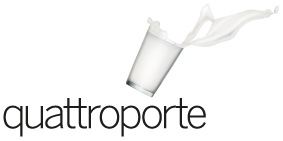Venedigs 56e konstbiennal (Venice’s 56th art biennale) did not disappoint the politically correct.
Shining a light on current politics and large issues like migration, war and injustice curator Okwui Enwezors biennale was unexpectedly expected.
There were skulls, weapon arsenals and depictions of women in vulnerable positions that dominated. This is certainly honourable, but it failed to become moving art. Rather the exhibit was visually predictable and conceptually one-dimensional with a few glowing exceptions. With this in mind, lets focus on these exceptions.
In the Arsenal area the Italian pavilion touched upon human memory and its importance in the creation of culture. If we cannot remember what we have been through there is no basis for the stories, values and codes that are the DNA of culture. Without memory man becomes an emotional, temperamental animal capable of anything. Using memory we codify history and the future. Umberto Eco hävdar i en filmtriptyk (In a movie triptych Umberto Eco claims) that without memory man has no soul. What happens in a digitised world where memory is no longer a quality we need to cultivate, but rather something that is handled by information technology? Does that mean that man is developing a culture void of depth and soul? Are we perhaps becoming “less” human? The Italian pavilion and its curator Vincenzo Trions gave rise to many questions. Thankfully he left the search for answers up to the visitors themselves.
The Japanese pavilion with Chiharu Shiotas installation The Key in the Hand was one of the Biennales most striking visual exhibits. With 180 000 keys suspended in 400 km red string around two boats she wants to illustrate the hope that a key and human relations can provide. Once again it is memory, represented here by a key and human bonds, that allow culture to exist. The boats symbolize the protective hand that we all require.
Catalan artist Jaume Plensas exhibit Together in Basilica di San Giorgio Maggiore was one of the few that raised the point of migration without railroading us with a leaden politically correct manifesto. His large-scale sculptural installations were light, fleeting and visually interesting and despite the weight and the surrounding 400 year old church setting managed to feel strangely relevant.
Quattroporte has visited the Venice Biennale for the past ten years and it has been a valuable source of information about where society as a whole is headed and understanding the consequences that may follow. With a few exceptions this year, more than any of the previous years, was without hope, retrospective and anguished. Lets hope that the 2015 biennale is merely a blotch on the record and not a valid and vital vision of the future.
Peter Majanen
